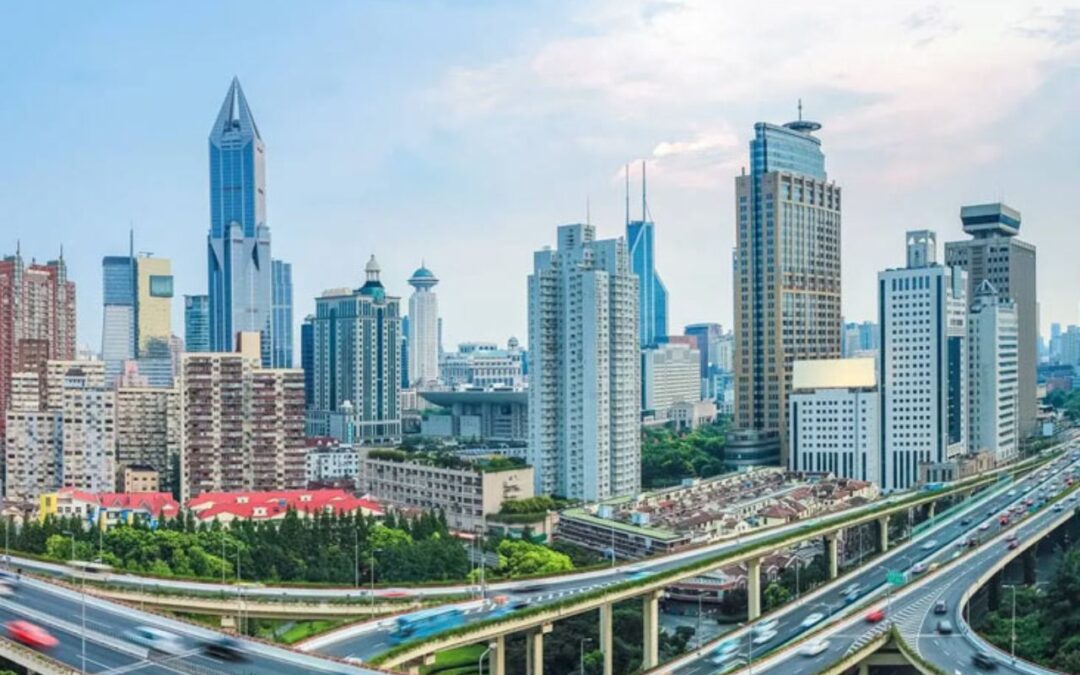Synopsis– India’s Smart Cities Mission aims for sustainable, technology-enabled and inclusive urban change by 2030. Through the use of greenfield projects, retrofitting existing cities, and regional growth in Tier-II and Tier-III urban centres, the mission deploys technology, governance and infrastructure in a complementary way, facilitating ancillary and balanced development, improving livability factors, and positioning India with credible participation in global urban transition.
Cities in India are expanding at a pace that often feels overwhelming. Roads choke, services struggle, yet opportunities keep pulling people in. The government’s Smart Cities Mission, launched in 2015, tries to answer these pressures. By 2030, new towns and upgraded old cities may define urban India’s future.
India’s Smart City Vision for 2030
- Government Programs: The vision of India is one where cities become smart by 2030, with relevant projects such as the Smart Cities Mission, Digital India, AMRUT, and renewable energy initiatives aimed at building sustainable and efficient urban systems for citizens.
- Core Principles: Technology, sustainability and inclusiveness remain a constant. Each city will need to adopt digital infrastructure, overall sustainability, and access for all communities.
- Urban Outlook: By 2030, over 600 million Indians will be living in cities. Due to a higher contribution to the economy, cities must provide better transportation, a cleaner environment and reliable municipal services to be globally competitive.
Defining the Smart City Framework
- Area-Based Development (ABD): This component focuses on upgrading specific districts into model zones. It integrates smart streets, housing, IoT-enabled services, and efficient energy systems. The compact approach ensures replicable solutions for other regions.
- Pan-City Solutions: This dimension applies to technology city-wide, covering intelligent traffic management, smart grids, and advanced water recycling systems.
- Holistic Vision: Beyond technology, the framework emphasises livability, sustainability, resilience to climate change, and citizen participation, ensuring inclusiveness in India’s smart city transformation by 2030.
Smart Cities in India
1. Greenfield Smart Cities – Built from Scratch
India’s greenfield smart cities are a futuristic concept that starts with sustainability and smart technology as the basis of planning. These projects attempt India’s bold experiment to create “smart” from inception and provide it with a global competitiveness benchmark.
- Dholera SIR (Gujarat): Planned to be the nation’s first fully planned smart city, it contains IoT-enabled infrastructure, renewable energy hubs and autonomous transit.
- GIFT City (Gujarat): Planned to be a global finance hub, it provides fintech-led infrastructure and world-class business districts.
- Dream City (Surat): Planned to be an eco-friendly hub with residential and business development.
- Trans Ganga City (Uttar Pradesh): Planned to be a sustainable township with modern infrastructure to accommodate green township principles.
2. Upgrading Existing Cities into Smart Hubs
A number of current cities are becoming smart cities with appropriate innovation. These actions represent how Tier-I and Tier-II cities are evolving, and becoming smarter and smarter to compete internationally with tradition and smartness for the urban future.
- Surat: Smart in traffic management as well as waste-to-energy plants, and having smart systems for managing it all through a single command centre.
- Chennai: Smart in flood-resilience infrastructure, smart solar-powered lights and smart trees.
- Pune: Smart city initiatives of citizens to create wi-fi spots, e-governance apps and smart transportation.
- Indore: Cleanest city in India, smart and a pioneer in waste segregation and other digital water management.
- Ahmedabad & Bhubaneswar: A digital approach to heritage.
3. Technology & Policy Hubs Driving Growth
Smart cities are harnessing strong technology domains alongside governance reforms to leapfrog the smart adoption. These cities together bring to life the importance of linking policy support with technology leadership; their development embodied the idea that local place-based innovations, when coupled with strong governance, can provide agility, accelerate transformations, and position India as a global leader in smart cities.
- Bengaluru & Hyderabad: Pacesetters for AI-enabled traffic management, EV charging infrastructure, and sophisticated digital governance.
- Lucknow: Positioning itself as India’s inaugural “AI City” with a research agenda focused on using artificial intelligence alongside defence-technology innovation.
- Faridabad: Building health monitoring systems that are citizen-centric and an e-governance model that is city-wide
- Thiruvananthapuram & Coimbatore: Continuing the journey as IT-focused cities that emphasise inclusion and citizen-primacy in their urban models.
Also read: Top 10 Mega Projects in India – See How They are Transforming Real Estate by 2030
Regional and Tier-II Smart City Expansion
1. Andhra Pradesh
- Amaravati: To be a model capital, integrating green infrastructure and digital governance.
- Visakhapatnam: Emphasising on smart mobility, port-led development and sustainable energy.
- Tirupati and Kakinada: Continuing development projects in solid waste management, water supply and digital utilities.
2. Eastern Belt
- Patna: Developing smart roads, IT-enabled traffic management and e-governance.
- Muzaffarpur: Focused on urban sanitation and efficient water distribution.
- Guwahati: Improving urban riverfront, transport connectivity and environmental sustainability.
3. Central Region
- Raipur and Naya Raipur (Atal Nagar): Extending i-City components around integrated city command centres, renewable energy grid and green housing.
4. Union Territories
- Chandigarh: Improving mobility and ICT-enabled governance.
- Silvassa: Improving eco-tourism and infrastructure potential.
- Delhi: Expanding digital governance, including sustainable practices in urban environments.
Overall Impact: The mission will provide a multi-pronged impact by focusing on balanced growth, extending smart development to non-metro areas and stronger measurements of inclusivity in the urban transformation journey across India.
Conclusion
India’s Smart Cities Mission is creating a nationwide transformation by integrating advanced infrastructure, sustainable solutions, and digital innovation across metropolitan, Tier-II, and Tier-III cities. By ensuring regional inclusivity, it strengthens economic growth, enhances livability, and positions India to achieve balanced urban development, making cities future-ready by 2030.
Written by N G Sai Rohith





